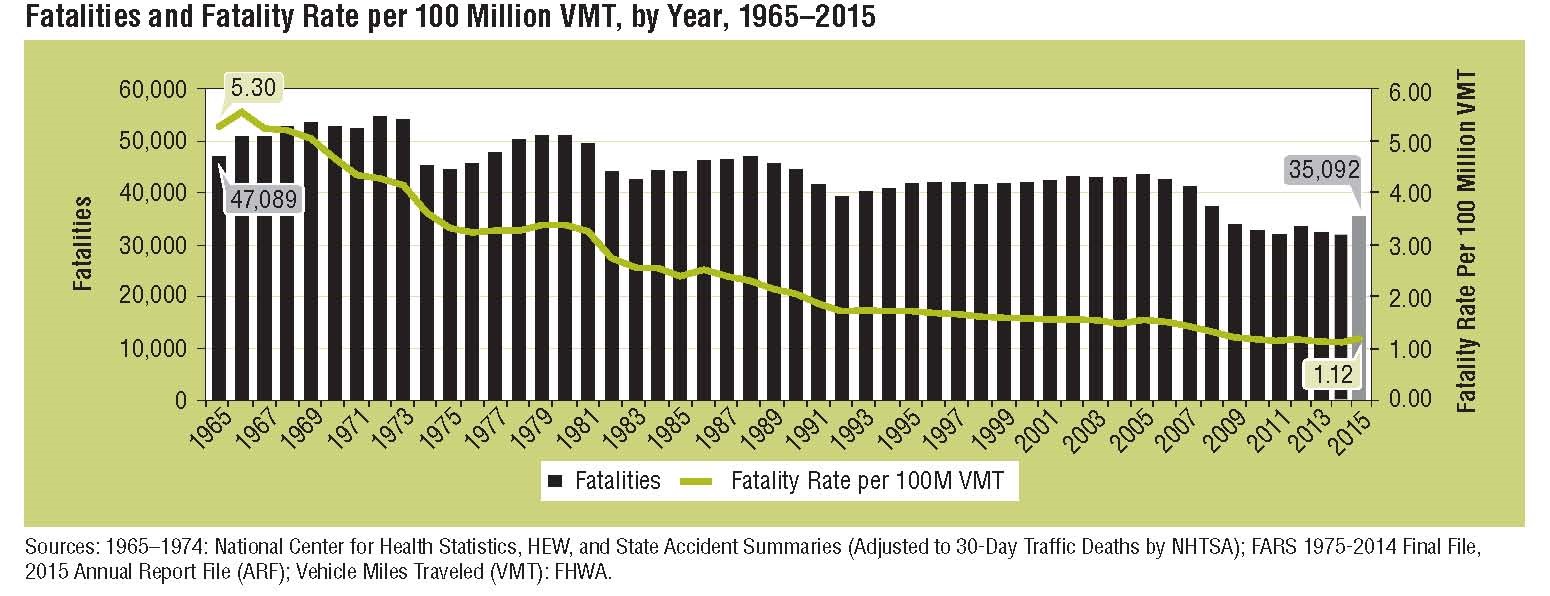Last year, 35,092 people were killed in motor vehicle crashes in the United States, which averages out to 96 people per day. This represents a 7.2% increase in deaths from 2014, the largest percentage increase since 1966. While Americans drove more in 2015 than 2014 and statistically the more people drive, the more crashes there will be, the frequency of traffic fatalities also went up. Fatalities per 100 million vehicle miles traveled (VMT) increased to 1.12 in 2015 from 1.08 in 2014. The number and frequency of deaths due to motor vehicle crashes in the U.S. has gone down over the last 50 years, but the recent rise is cause for serious concern.
 Source: NHTSA
Source: NHTSA
Eighteen percent of 2015’s traffic fatalities were pedestrians and bicyclists. Both of these roadway user categories saw a substantial increase in their fatality rates from 2014 to 2015 (+9.5% for pedestrians and +12.2% for bicyclists). These deaths underscore the importance of communities incorporating “complete streets,” which are designed and operated for the safety and convenience of all users.
The reduction in traffic fatalities over the last 50 years is frequently credited to a combination of vehicle improvements, such as air bags and electronic stability control, and behavioral changes, such as increased seat belt use and reduced drunk driving, but it is important to remember the impact roadway infrastructure itself can have. Improvements in road design (such as adding shoulder rumble strips, guard rails and medians, widening lanes/shoulders and more visible road markings), road materials (such as high friction surface treatments) and road operation (such as improved traffic signal timing) can all make roads safer and reduce traffic deaths.
The Federal Highway Administration’s Highway Safety Improvement Program (HSIP) collects data, performs research and provides funding to states for strategic, data-driven roadway improvements with the goal of significantly reducing traffic fatalities and serious injuries on public roads. The program was reauthorized last year in the FAST Act and given a small budget increase. With traffic fatalities rising, the HSIP will be more important than ever and should be continued and expanded.
The White House and the Department of Transportation are inviting tech companies, universities and even the general public to analyze crash data and help determine the causes of the surge in traffic fatalities. The White House released a statement saying, “The journey toward zero deaths on our roads will be a long one, but data will provide the guiding lights to take us there.”
